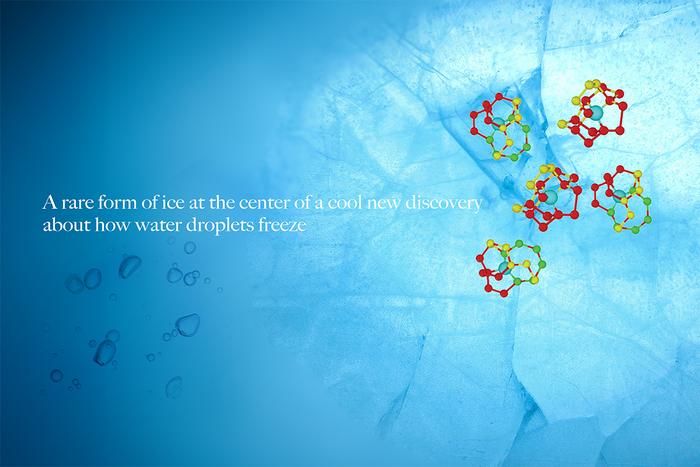Unveiling the Surface Secrets of Ice Formation
Researchers from the University of Tokyo have made a fascinating discovery about how water freezes, challenging long-held beliefs about ice formation. The study, published in Nature Communications, reveals that a rare form of ice, known as ice 0, plays a crucial role in initiating the freezing process near the surface of water droplets.
This finding solves a longstanding puzzle in the field of ice physics and could have far-reaching implications for various scientific and technological domains. The research team from the Institute of Industrial Science at the University of Tokyo found that tiny crystal precursors with a structure similar to ice 0 can trigger ice formation just below the water’s surface, rather than at its core or in contact with a solid container.
The Unexpected Role of Ice 0 in Freezing Dynamics
Ice 0 is a recently discovered form of ice, one of over 20 varieties known to science. Unlike the common ice I that we encounter in everyday life, ice 0 exists only under specific conditions and was previously thought to have limited relevance to natural ice formation processes.
However, the new study shows that structures similar to ice 0 can spontaneously form near the surface of water droplets due to negative pressure effects caused by surface tension. These ice 0-like precursors serve as a bridge between liquid water and solid ice, facilitating the crystallization process.
Lead author Gang Sun explains, “Simulations have shown that a water droplet is more likely to crystallize near the free surface under isothermal conditions. This resolves a longstanding debate about whether crystallization occurs more readily on the surface or internally.”
The researchers found that the ring-shaped structure of ice 0 precursors closely resembles that of supercooled water. This structural similarity allows water molecules to transition more easily into a crystalline state without needing to immediately form the more rigid structure of regular ice I.
Once the crystallization begins from these precursors, the ice 0-like structures quickly rearrange themselves into the familiar ice I. This process explains why ice formation often starts near the surface of water droplets, a phenomenon that has puzzled scientists for years.
Senior author Hajime Tanaka emphasizes the broader impact of this discovery: “The findings regarding the mechanism of surface crystallization of water are expected to contribute significantly to various fields, including climate studies and food sciences, where water crystallization plays a critical role.”
Why it matters: Understanding the intricacies of ice formation is crucial for a wide range of applications, from predicting weather patterns to developing more efficient food preservation techniques. This new insight into the role of ice 0 precursors could lead to more accurate climate models, improved frost protection methods in agriculture, and advancements in cryopreservation technologies.
The discovery may be particularly relevant in meteorology, where the formation of ice via ice 0-like precursors could have a more pronounced effect in the tiny water droplets found in clouds. This could potentially improve our understanding of cloud formation, precipitation, and other atmospheric phenomena.
Moreover, the study’s findings could inspire new approaches in materials science and engineering. By mimicking the surface conditions that promote ice 0 precursor formation, researchers might develop novel methods for controlling ice growth in various industrial processes.
As we continue to unravel the complexities of water and ice, this research opens up new avenues for exploration. Future studies may focus on manipulating the formation of ice 0 precursors to control ice nucleation in different contexts, from preventing frost damage in crops to designing more efficient ice-making technologies.
The implications of this discovery extend beyond pure scientific interest. A deeper understanding of ice formation processes could lead to innovations in diverse fields such as aviation (for better de-icing strategies), energy storage (for more efficient cooling systems), and even space exploration (for studying ice formation on other planets and moons).


